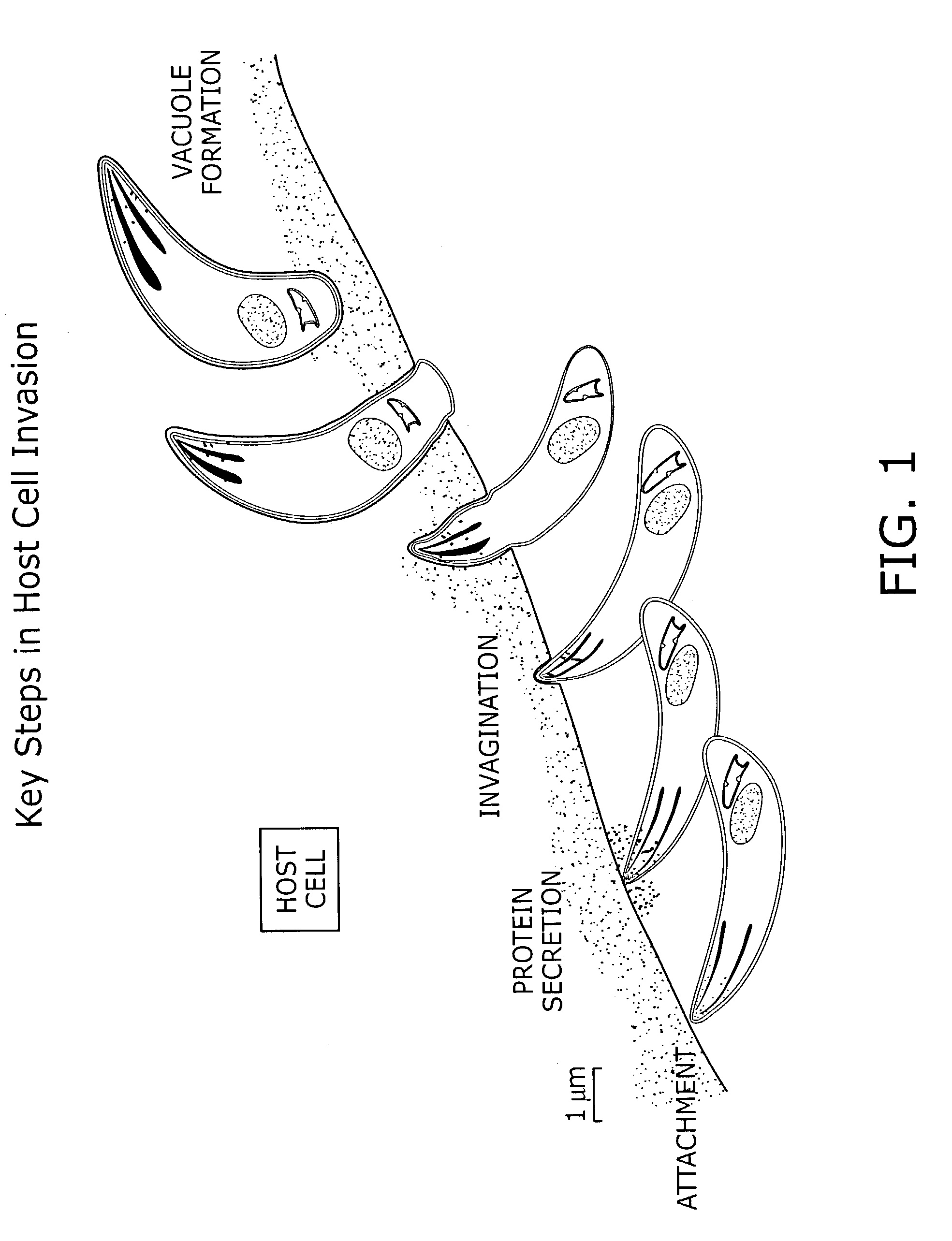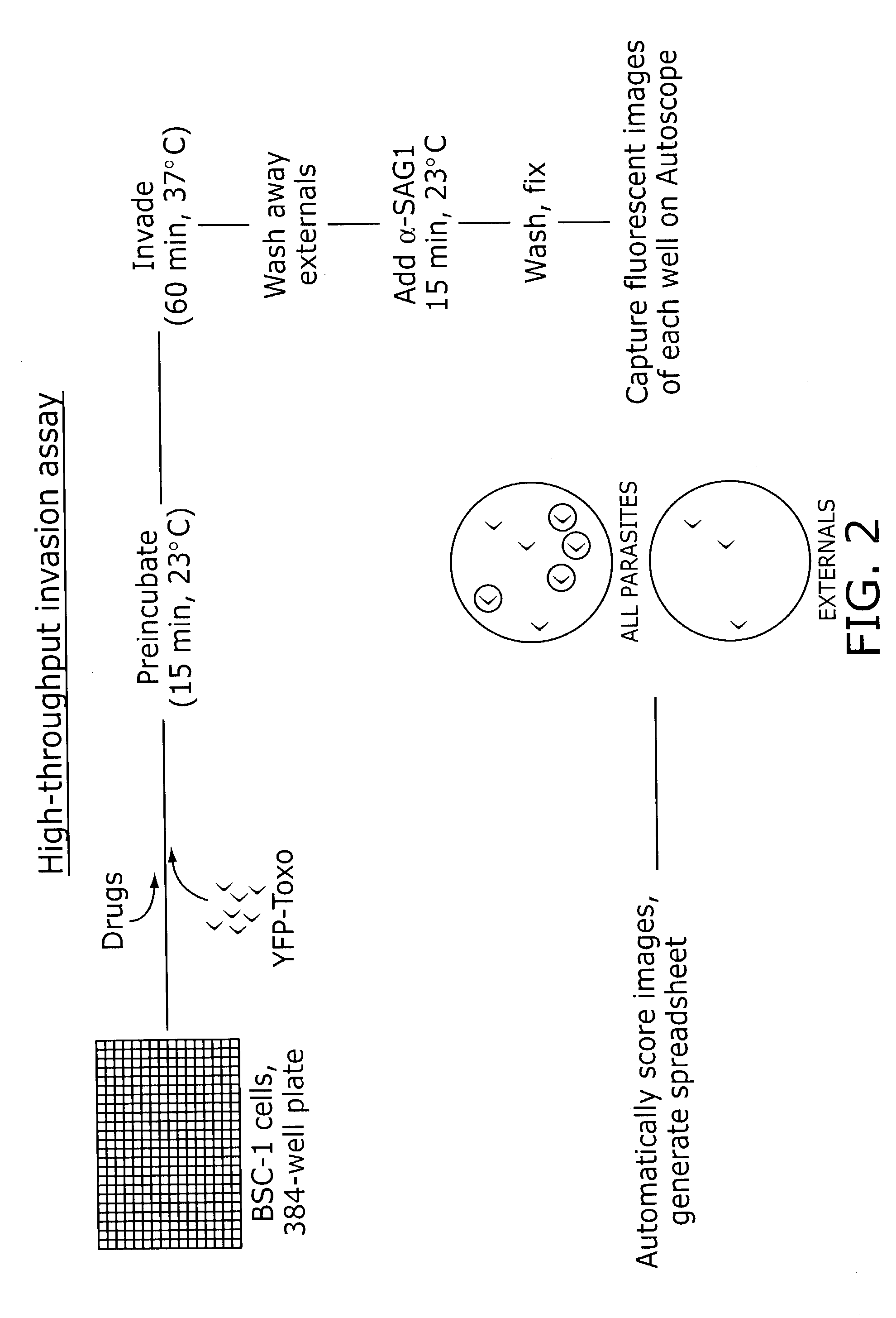Identification of anti-protozoal agents
a protozoal parasite and identification technology, applied in the field of identification of protozoal parasites, can solve the problems of limiting their effectiveness, no satisfactory treatment of leishmaniasis, administered intravenously, etc., and achieve the effect of reducing the level of protozoal parasite contamination
- Summary
- Abstract
- Description
- Claims
- Application Information
AI Technical Summary
Benefits of technology
Problems solved by technology
Method used
Image
Examples
example i
Assay for Identifying Protozoal Inhibitors
[0152]This example describes methods for identifying small molecule inhibitors and activators using the inventive assay systems and methods for protozoal cell invasion.
Use of Labeled Protozoa
[0153]The following protocol is carried out in all wells of a 384 well plate, as illustrated in FIG. 2. The media covering a confluent monolayer of host cells is removed and replaced with a previously prepared solution of a test compound in media. The host cells are BSC-1 cells, a monkey kidney cell line (however, any host cell may be used since Toxoplasma gondii can invade essentially any nucleated cell). A solution of T. gondii tachyzoites (gift from Boris Striepen) expressing the yellow fluorescent protein is then added and the host cells and labeled parasites are preincubated with the compound at a temperature at which invasion does not occur (20–22 C). After 15 minutes the assay plate is temperature shifted to 37° C., a temperature at which host cel...
example 2
Protozoal Modifying Agents
[0160]This example describes the identification of small molecule inhibitors and activators using the inventive assay systems and methods for protozoal cell invasion.
Methods
Cell Lines and Parasites
[0161]African Green Monkey BS-C-1 renal epithelial cells (CCL 26, American Type Culture Collection (ATCC), 10801 University Boulevard, Manassas, VA 20110–2209), were cultured in Dulbecco's Modified Eagle Medium (DMEM; Life Technologies, Gaithersburg, Md.) containing 10% fetal bovine serum (FBS; v / v). T. gondii tachyzoites (RH strain) stably expressing a tandem repeat of the yellow fluorescent protein (YFP; generous gift from B. Striepen) were cloned and cultured in human foreskin fibroblasts (CRL 1634, ATCC) under 20 μM chloramphenicol as previously described (Roos et al., (1994) Methods in Cell Biology 45, 27–63).
High-Throughput Invasion Assay
[0162]BS-C-1 cells were trypsinized, released into DMEM containing 10% (v / v) FBS, and dispensed into tissue culture-treate...
PUM
 Login to View More
Login to View More Abstract
Description
Claims
Application Information
 Login to View More
Login to View More - R&D
- Intellectual Property
- Life Sciences
- Materials
- Tech Scout
- Unparalleled Data Quality
- Higher Quality Content
- 60% Fewer Hallucinations
Browse by: Latest US Patents, China's latest patents, Technical Efficacy Thesaurus, Application Domain, Technology Topic, Popular Technical Reports.
© 2025 PatSnap. All rights reserved.Legal|Privacy policy|Modern Slavery Act Transparency Statement|Sitemap|About US| Contact US: help@patsnap.com



